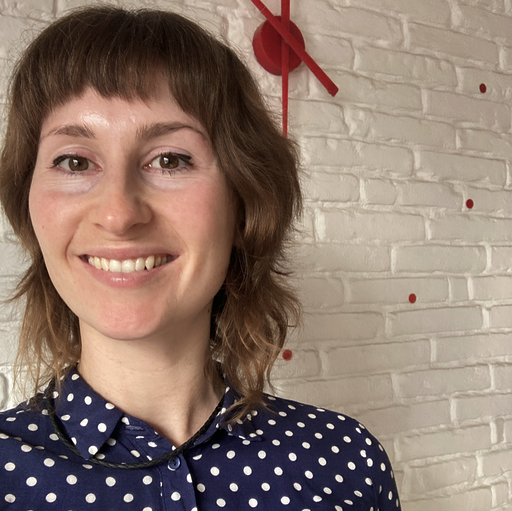Thinking about homeschooling your preschooler, but not sure where to start? You’re not alone. At this age, learning doesn’t have to mean flashcards or long lessons. It can be as simple as singing songs, telling stories, or showing off a favorite toy. Preschool at home can be joyful, play-based, and surprisingly effective.
That said, it can also be time-consuming and a little overwhelming. You’re not just a parent. You’re suddenly the planner, the teacher, and the activity coordinator, too. Finding the balance between structure and spontaneity isn’t always easy.
Keep reading to figure out what preschoolers need to learn, how to shape your day, and how to choose a pre-K homeschool curriculum that fits your family. We’ll also let you in on some options that support early learning with just the right mix of guidance, connection, and play, so you don’t have to do it all on your own.
What does a preschool homeschool curriculum look like?
A preschool homeschool curriculum is less like a rigid school timetable and more like a gentle rhythm to the day. It’s about building core skills, like early reading, simple math, emotional awareness, and fine motor activities (hello, scissors and playdough). And of course, lots and lots of play.
There’s no set right or wrong curriculum for your little one, and you’ve got options, too. Some homeschool parents like the structure of a boxed curriculum, where everything’s planned out and ready to go. Others prefer to piece it together themselves, using their intuition and following their child’s lead.
The big thing to know is that learning at this age is hands-on. Preschoolers aren’t meant to sit still and memorize facts. They’re wired to explore, touch, build, dance, ask “why?” a hundred times, and try things out for themselves.
At bina, active play is part of every school day. Learners aren’t just watching a screen. They’re dancing to silly songs, building with blocks, drawing their biome discoveries, or jumping like animals during interactive movement breaks.
Small live classes mean they also play and connect with peers in real time, from scavenger hunts to story-based games. Even through a screen, movement, laughter, and friendship are built in.
What should preschoolers learn at home?
Preschool at home doesn’t need to be packed with formal lessons or fancy materials. It’s about giving kids the building blocks to grow, play, and understand the world around them. Here’s what to focus on:
-
• Language & literacy – chatting, storytelling, rhyming, letter sounds, and soaking up new words like sponges
-
• Math & logic – counting everyday objects, sorting socks, spotting patterns, recognizing shapes
-
• Fine & gross motor skills – cutting with scissors, drawing squiggles, climbing playgrounds, jumping like frogs
-
• Practical life skills – getting dressed, pouring juice, tidying up toys, helping prep snacks
-
• Social-emotional learning – sharing, taking turns, following simple routines, naming and managing big feelings
-
• Nature & art – digging in dirt, collecting leaves, painting with fingers, crafting with everyday materials
Less really is more at this age. Play is learning, so don’t stress about ticking boxes. The magic happens in the little moments.
What a preschool homeschool day can look like
At this age, it’s all about pace, not the clock. A good preschool homeschool day flows gently, balancing structure with freedom, activity with rest. Here’s what that might look like:
-
• Morning routine & calendar time – Start with brushing teeth, getting dressed, and maybe a little “what day is it?” chat with a weather song or calendar board. At this age, consistency builds confidence and helps little ones ease into the day.
-
• Free play & sensory exploration – Think blocks, playdough, water bins, or anything squishy and hands-on.
-
• Storytime and snack – A cozy read-aloud (bonus points for silly voices), followed by something easy like fruit or crackers.
-
• Creative/art activity – Finger painting, gluing, cutting, drawing — whatever sparks curiosity and lets them create.
-
• Outdoor play – Run, climb, dig, balance, chase bubbles. Nature is a preschooler’s playground and classroom. Even in an online setting, bina makes space for this with breaks and off-screen activities so kids can head outside, explore their environment, and bring those discoveries back into the classroom.
-
• Quiet rest or cuddle time with books – Recharge with soft blankets, a stack of picture books, or just a little downtime.
-
• Practical life tasks – Folding laundry, feeding the pet, helping peel veggies — yes, it all counts as learning.
At bina, this natural rhythm is supported through live, interactive preschool classes that blend structure with freedom. Kids build early literacy, math, and life skills through songs, stories, and real-time connection with their teacher and classmates, all while fostering that joyful, curious spark.
Preschool homeschool options: Curriculum or DIY?
There’s no single “right” way to homeschool your preschooler, and that’s the beauty of it. Some families love the structure of a ready-made curriculum, while others thrive with a more relaxed, child-led approach using whatever’s around the house.
The key is choosing the path that fits your family, your time, your child’s personality, and your comfort level. There’s no one-size-fits-all, and you can always blend approaches along the way.
Here’s a breakdown of the most common options:
Pre-made preschool curricula
These come with lesson plans, printables, and step-by-step activities. They’re great if you like structure and want everything mapped out. Some popular examples are:
-
• The Good and the Beautiful
-
• Blossom & Root
-
• Abeka Preschool
-
• Playing Preschool by Busy Toddler
Hybrid/online programs
If you love the idea of homeschooling but want extra support (or structure), flexible programs like bina offer the best of both worlds. Kids join live, teacher-led classes with a small group of peers, while you get a clear learning path, regular feedback, and a global community. And it’s all from home.
Our first level is for learners aged four to six, which includes kiddos who are ready for preschool.

DIY approach
This approach is totally flexible and child-led. Think reading stacks of picture books, collecting leaves, building forts, baking muffins, and turning daily life into learning. It’s relaxed, creative, and budget-friendly.
Benefits of homeschooling preschool
Homeschooling your preschooler doesn’t mean recreating a classroom at the kitchen table. It means creating a learning environment where your child can grow, explore, and learn at their own pace. Here’s why so many families love it:
-
• One-on-one attention
Since they’re not in class with 15 other preschoolers, your child gets the full, undivided focus they deserve at home. They have more space to ask questions, try new things, and get support when they need it.
-
• Flexible pace and routine
You’re not tied to a strict schedule. You can slow down on tough days or lean into a topic when your child is really into it.
-
• Stronger family bonds
Learning together naturally brings you closer. You get to be there for the discoveries, the giggles, and the little lightbulb moments.
-
• They feel safe and confident
At home, your child is in a familiar, low-pressure space. It makes it easier to take risks and build independence.
-
• Room to follow their interests
Whether it’s bugs, baking, or building forts, homeschooling lets you build learning around what your child loves most, keeping them curious and engaged.
Challenges of homeschooling preschool
Homeschooling your preschooler can be incredibly rewarding, but it’s not all storytime and crafts. Here are a few common challenges families face:
-
• The pressure to “do it right”
Without a roadmap, it’s easy to wonder if you’re doing enough, or doing it “the right way.” But preschool doesn’t need to be perfect. At this age, connection, play, and curiosity matter more than ticking boxes.
-
• Time commitment
Homeschooling takes time, plain and simple. Between planning activities, being present for hands-on learning, and keeping things running at home, it can feel like a full-time job. Because in many ways, it is.
-
• Juggling other kids or work
If you’ve got a younger sibling on your hip or emails piling up, consistency can be tough. Some days flow, others flop.
-
• Lack of social interaction
At this age, kids benefit hugely from being around peers. Without regular playdates or group learning, they can miss out on key social development. That’s why finding live online classes with other preschoolers can make a big difference.
-
• Not knowing what’s “enough”
With no report cards or teacher check-ins, it’s normal to second-guess yourself. Having a bit of structure or support, like a curriculum, checklist, or live guidance, can help take the pressure off and keep you on track.
Is preschool homeschooling right for you and your kiddo?
Preschool homeschooling can be a beautiful way to connect with your child, follow their interests, and create a learning flow that works for your family. But it’s not a one-size-fits-all solution, and that’s okay.
Here are a few questions to help you figure out if it might be a good fit:
-
• Do you enjoy spending time guiding your child’s learning through play, stories, and everyday moments?
-
• Are you comfortable with a slower, more flexible approach to academics?
-
• Do you have the time (and energy) to create daily lesson plans and prep activities, even simple ones?
-
• Does your child do well with solo play, or do they crave lots of interaction with other kids?
-
• Would having outside structure or support, like live classes or a ready-made curriculum, make things easier?
There’s no perfect formula. Some families thrive with full-on homeschool days, others blend a bit of structure with spontaneous play. You might start with one approach and end up somewhere totally different, and that’s completely normal.
At this age, the goal isn’t to replicate school or meet a list of benchmarks. It’s to nurture curiosity, build routines that feel good, and lay the foundation for a lifelong love of learning. Whether you commit fully or just dip your toes in, what matters most is that it works for you and your child.
Preschool at home, your way
Homeschooling your preschooler doesn’t have to look like a Pinterest-perfect setup or a mini classroom. It can be messy, playful, slow, flexible, and still incredibly meaningful.
Whether you’re following a full curriculum, winging it with storybooks and nature walks, or doing a bit of both, the heart of it is the same: helping your child grow with confidence, curiosity, and joy.
And while some families love going solo, you don’t have to do it all on your own. If you’re looking for more structure, real-time support, or a sense of community, bina offers the perfect in-between. With live, small-group classes led by experienced teachers, a global peer group, and a carefully crafted learning path, bina brings together the comfort of home and the guidance of a great school.
Want to see how it could work for you and your preschooler? We’d love to chat.







Comments